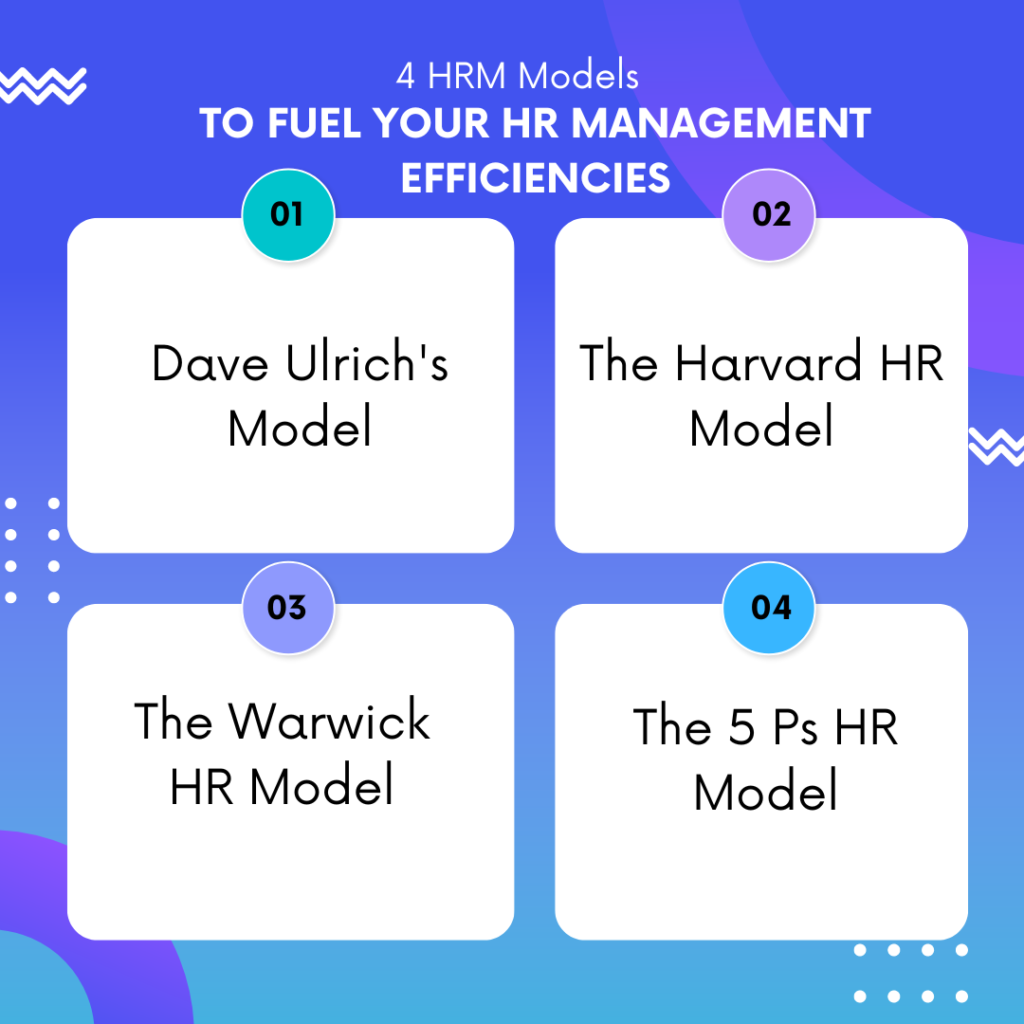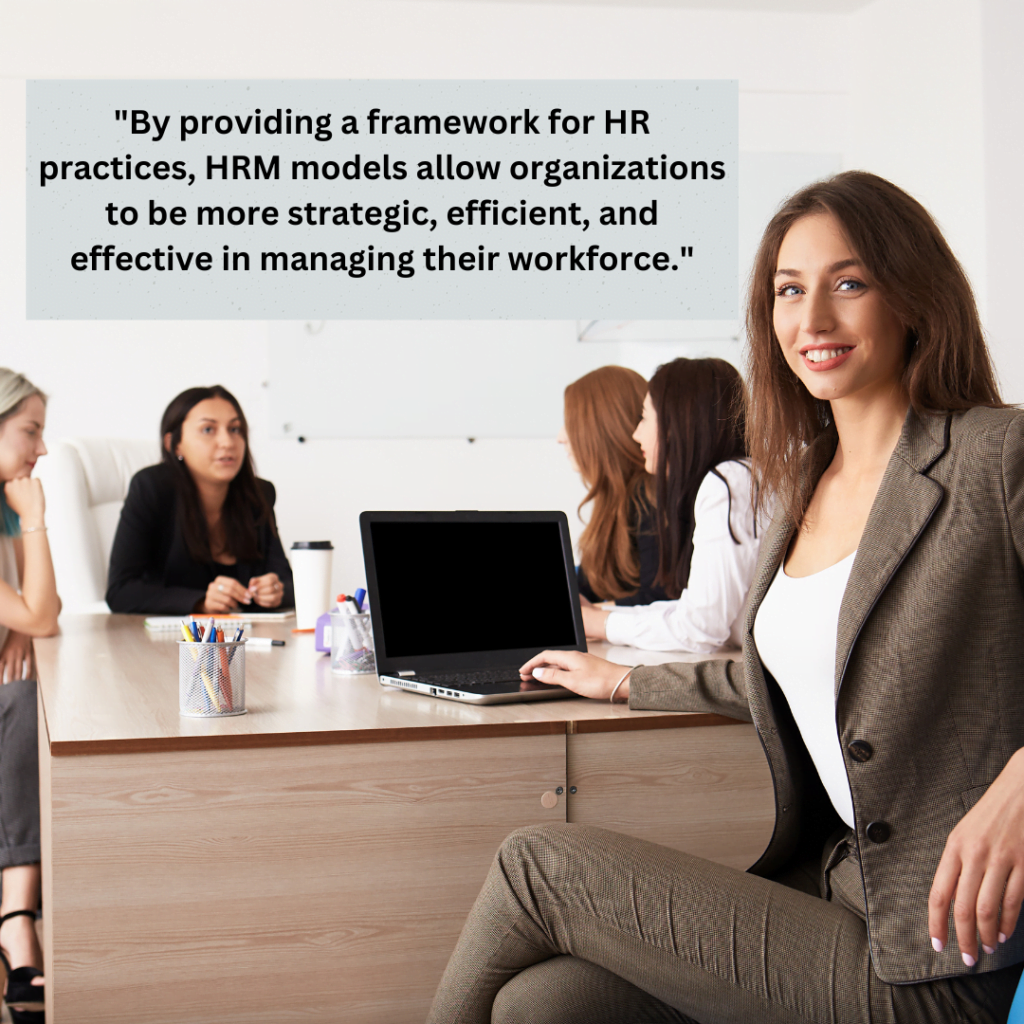Human Resource Management (HRM) is a complex field that requires a delicate balance of strategic planning, stakeholder management, and employee support. Fortunately, there are several HRM models that can help guide professionals in their work. HR management models are very important in HR courses also as they provide a structured framework for understanding and implementing HR practices. In this blog, we will explore four HRM models – Dave Ulrich’s Model, the Harvard HR Model, the Warwick HR Model, and the 5P’s HR Model – and their importance in modern HRM practices.

Dave Ulrich’s Model:
If you’re looking for a comprehensive HRM model that considers every aspect of the employee experience, look no further than Dave Ulrich’s Model. Ulrich’s model focuses on four key areas: Strategic Partner, Change Agent, Administrative Expert, and Employee Champion. By focusing on these areas, HR professionals can align HR practices with overall business objectives, manage change effectively, ensure operational efficiency, and prioritize employee well-being.
The Strategic Partner role is particularly important as it involves working with senior management to identify strategic goals and align HR practices accordingly. This role allows HR professionals to be proactive in supporting the organization’s growth and development. Additionally, the Employee Champion role ensures that employees’ needs and concerns are heard and addressed, creating a more engaged and satisfied workforce.
The Harvard HR Model:
The Harvard HR Model emphasizes the importance of considering stakeholder interests when developing HRM policies and practices. It recognizes that organizations must balance the needs of employees, shareholders, customers, and the community to achieve success. The model has four main components: Situational Factors, Stakeholder Interests, HRM Policy Choices, and HRM Outcomes.
The Situational Factors component emphasizes the importance of understanding the organization’s external and internal environment. This understanding allows HR professionals to tailor HR policies and practices to the specific needs of the organization. The Stakeholder Interests component emphasizes the importance of considering the needs and interests of various stakeholders when developing HR policies and practices.
The HRM Policy Choices component involves developing policies and practices that align with the organization’s goals and objectives while also considering stakeholder interests. Finally, the HRM Outcomes component involves measuring the effectiveness of HR policies and practices in achieving the organization’s goals and objectives.
The Warwick HR Model:
The Warwick HR Model is all about enhancing organizational performance through effective HRM practices. It has three main components: Contextual Factors, HRM Content, and HRM Outcomes. The Contextual Factors component emphasizes the importance of understanding the organization’s external and internal environment, including the cultural and economic context.
The HRM Content component involves developing HRM policies and practices that align with the organization’s goals and objectives. This component allows HR professionals to tailor HR practices to the specific needs of the organization. Finally, the HRM Outcomes component involves measuring the effectiveness of HR policies and practices in achieving the organization’s goals and objectives.
The 5P’s HR Model:
The 5P’s HR Model focuses on five key components: Philosophy, Policies, Programs, Practices, and Performance. This model emphasizes the importance of having a clear HRM philosophy that aligns with the organization’s goals and objectives. It also recognizes the importance of developing policies and practices that are tailored to the specific needs of the organization.
The Programs and Practices components involve developing and implementing HR programs and practices that align with the organization’s goals and objectives. Finally, the Performance component involves measuring the effectiveness of HR policies and practices in achieving the organization’s goals and objectives.

Final Words
HRM models are essential for guiding HR professionals in their work. By providing a framework for HR practices, they allow organizations to be more strategic, efficient, and effective in managing their workforce. Moreover, these models allow HR professionals to tailor their practices to the specific needs of their organization and industry.
Human Resource (HR) management models can also be beneficial for your HR certification.





Leave a Reply